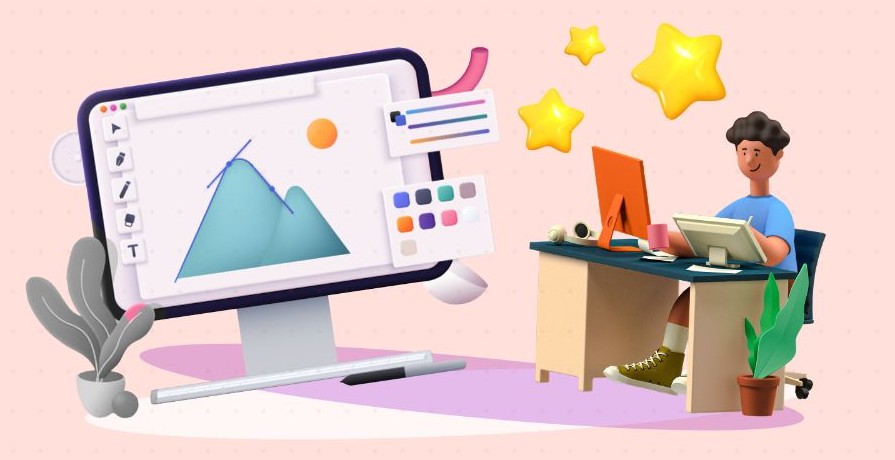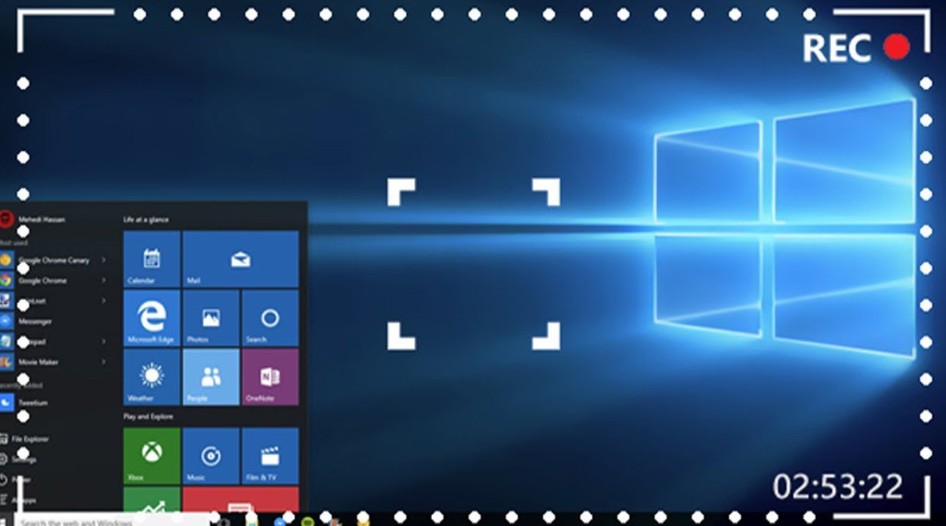Best Selling Products
Self-Study Design Journey for Beginners – Easy to Understand, Practical, Effective
Nội dung
- 1. Introduction to Design and Its Importance
- 2. Why should you learn Design yourself?
- 2.1. Advantages of Self-Study
- 2.2. Diverse Learning Resources
- 2.3. Challenges and Solutions
- 3. Basic Steps to Self-Study Design
- 3.1. Research and observation
- 3.2. Learn to draw and design with Photoshop and Illustrator
- 3.3. Master specialized knowledge
- 4. Building Personal Brand and Career Opportunities
- 4.1. Developing Personal Portfolio
- 4.2. Networking and Finding Opportunities
- 4.3. Long-term Development Plan
- 5. Some Related Questions
This article is aimed at those who are new to the world of design, those who do not have much background knowledge but have a passion for discovery and creativity. The goal of the article is to provide you with a clear self-study roadmap from the most basic knowledge to practical applications to help you gradually get acquainted and improve your design skills.

In the era of increasingly developing digital technology, design has become one of the indispensable important factors for businesses and individuals. From branding to product promotion, a beautiful and professional design always contributes to creating attraction and prestige for any project. In that context, self-studying design not only opens the door to career opportunities but also helps you discover and develop hidden creative abilities. In this article, SaDesign will share a detailed roadmap to help beginners learn basic design effectively and sustainably.
1. Introduction to Design and Its Importance
Design is not simply the harmonious arrangement of visual elements, but also the art of communication through colors, shapes, fonts and other visual elements. Each design product reflects a story, an idea that the designer wants to convey. In modern business, an impressive design can make a remarkable difference, helping the brand leave an impression in the minds of customers and thereby increase the effectiveness of product promotion.
Have you ever wondered why big brands put so much effort into designing their logos, brochures or websites? It’s because they understand that design is the bridge between creative ideas and business efficiency. Besides, self-studying design also gives you a competitive advantage when you can confidently create creative, unique products according to your own personality.
.png)
2. Why should you learn Design yourself?
2.1. Advantages of Self-Study
The development of the internet and online learning platforms has opened up countless opportunities for those who want to learn design on their own. The first advantage of self-study is the flexibility of time and place. You can choose a suitable study time, study at home or at a coffee shop, and even combine studying with your current job.
In addition, self-study also allows you to proactively choose the content and learning path that suits your personal goals. You do not need to follow a fixed curriculum of traditional courses but can freely explore the fields that interest you, from graphic design, web design to motion design. This helps you build a diverse and rich knowledge system.
2.2. Diverse Learning Resources
The design world today is filled with a plethora of learning resources that will not only help you grasp the fundamentals but also keep you updated with the latest design trends:
Books and Ebooks: Classics like "Elements of Graphic Design" or "Design Basics" will help you form a solid theoretical foundation. You can easily find books through online bookstores or local libraries.
.png)
Online Courses: Platforms like Coursera, Udemy, Skillshare offer a wide range of quality courses from industry experts, helping you access knowledge in a systematic and methodical way.
YouTube Tutorials and Industry Blogs: YouTube channels dedicated to design offer detailed tutorials from basic to advanced, while reputable blogs are also a valuable source of information for you to follow the latest trends and techniques.
2.3. Challenges and Solutions
Although self-study has many advantages, the journey of self-studying design is not without its challenges. Some common difficulties are:
Lack of Orientation and Knowledge System: When you study by yourself without a clear roadmap, it's easy to get lost among thousands of documents and information sources.
Solution: Create a specific study plan, select quality resources, and periodically self-evaluate.
Difficulty in Self-Motivation: Without a direct instructor or a study partner, staying motivated can be difficult.
Solution: Find a community or study group with similar interests, join forums and social networks specializing in design to exchange and receive feedback.
.png)
The outstanding benefits of self-study are that you are more proactive and confident in personal development, thereby creating creative works with a strong personal stamp.
3. Basic Steps to Self-Study Design
3.1. Research and observation
If you want to learn design on your own and become a real designer, you don’t necessarily have to jump right into Photoshop and master it right away. Mastering Photoshop doesn’t make you a professional designer, just like knowing how to draw doesn’t necessarily make you an artist. Learn the basics first.
First, you need to practice drawing. To learn design, you don’t necessarily have to draw beautifully, you just need some basic knowledge of art and the ability to sketch basic shapes. Suggestion: you can buy the book You Can Draw In 30 Days and practice for 1 month. This is considered the best book on drawing instructions.
.png)
Next, learn some basic graphic principles. After you have a basic knowledge of drawing, you must learn basic graphic principles. For example, you can buy a book with the story of Little Red Riding Hood called Picture This. This book combines storytelling with the basic knowledge of graphic design that every design student should know: color, typography and grid design.
The next thing to learn is some basic knowledge about user experience. Suggestions: The Design Of Everyday Things and Don't Make Me Think are 2 books that design students should read to understand the needs of users before creating products "aimed" at them.
Next, a content that is not learned will not know how to achieve the highest efficiency: How to write. A good designer will communicate effectively with users through the most selective and minimal words. Note, write for the average person, not in an academic, difficult to understand style. Suggestion: Read Made To Stick or refer to the website Voice And Tone to learn how to write well.
3.2. Learn to draw and design with Photoshop and Illustrator
Once you have the basics down, you can start learning Photoshop! But you should probably learn Illustrator first, then Photoshop.
.png)
Illustrator makes it easy for design learners to create logos and icons (recommendations: read Adobe Illustrator Classroom in a Book, Vector Basic Training). As for Photoshop, you can follow online tutorials (recommendations: refer to PSDTuts by TutsPlus website) to know how to start and develop your photoshop skills effectively.
3.3. Master specialized knowledge
It could be Mobile App design, Website or Infographics… Determine the field you want to pursue, choose one, a few, or all, and work hard for your choice.
When learning logo design, start by learning how to create a brand identity, starting with something as simple as a business card (hint: read Design Brand Identity). When learning mobile app design, create an app that is both beautiful and easy to use (hint: read Tapworthy). When learning web design, create a website that is easy to look at and easy to navigate (hint: read Don't Make Me Think, The Principles of Beautiful Web Design).
Important note, if you want to look “better” than other designers, you must know some basic knowledge of the programming profession (interactive design, HTML and CSS). Designer positions in the technology field (interactive design, web design, app design) are extremely scarce and highly compensated. There are many career opportunities for people who study design in this position/field.
4. Building Personal Brand and Career Opportunities
After accumulating knowledge and practicing through small projects, the next step for design enthusiasts is to build a personal brand, to make a difference and expand career opportunities.
.png)
4.1. Developing Personal Portfolio
A quality portfolio is not only a place to store your works, but also a "window" to introduce your creativity and personal style:
Choose works that clearly demonstrate your ability and creativity. A portfolio does not need to be large, but it needs to be quality and diverse.
Build a Personal Website or Profile on Industry-Specific Platforms: Platforms like Behance, Dribbble, or even a personal website will make it easy for you to share your work and get noticed by the community.
4.2. Networking and Finding Opportunities
Connecting with the community and industry professionals is an important part of self-learning and career development:
Join Professional Groups on Social Media: Groups on Facebook, LinkedIn or design forums will be places for you to exchange ideas and learn from other people's experiences.
Participate in Offline and Online Events: Seminars and workshops not only help you stay updated with new design trends but also expand your relationships in the industry.
Collaborate on Freelance Projects: Don't be afraid to try your hand at freelance projects – this is a great opportunity to practice and build trust with clients.
.png)
4.3. Long-term Development Plan
Building a personal brand not only helps you establish yourself in the industry, but also opens the door to many different career opportunities:
Plan for future growth. Maybe you want to become a professional designer, a creative director, or simply a freelancer with interesting projects.
Design is a field that is always changing. Always be ready to learn and apply new trends to your work.
Taking advanced courses, purchasing professional design tools, and continuously improving your skills will help you stay competitive in the market.
5. Some Related Questions
To help you better understand your self-study design journey, here are some frequently asked questions along with detailed answers:
How to learn design effectively without a direct instructor?
Self-studying design requires you to build a specific learning path for yourself, choosing quality resources such as books, video tutorials, blog posts, and online courses. Equally important is participating in the design community to receive feedback and suggestions from experts. In addition, practicing through small projects and regularly self-evaluating and adjusting your products will help you progress quickly.
.png)
Which software should be learned first for beginners?
For beginners, it is best to start with easy-to-use design software that has a lot of learning resources, such as Canva. Once you have mastered the basics, you can continue to learn more advanced software such as Adobe Photoshop and Adobe Illustrator to expand your creativity and create professional projects.
How to find inspiration in the process of self-studying design?
Inspiration can come from following the work of professional designers on platforms like Behance, Dribbble, or Pinterest. You should also join online communities, discuss with people who share your passion, and don’t be afraid to experiment with new ideas. In addition, attending events, workshops, and following specialized blogs and magazines will also help you stay up to date with trends and expand your creative horizons.
Is it necessary to learn all the basic knowledge of design before practicing?
It is not necessary to learn all the fundamentals before starting to practice. In fact, applying knowledge through small projects early on can help you better understand theoretical concepts and learn from mistakes. A flexible learning path that combines theory and practice will bring higher efficiency.
Self-studying design not only opens the door to creativity but also helps you develop yourself in your own way. Start your journey from the basics, practice through small projects and continuously learn from sample works. Don’t forget to build your personal brand and connect with the community, because that is the key to help you reach the top of your design career.












































